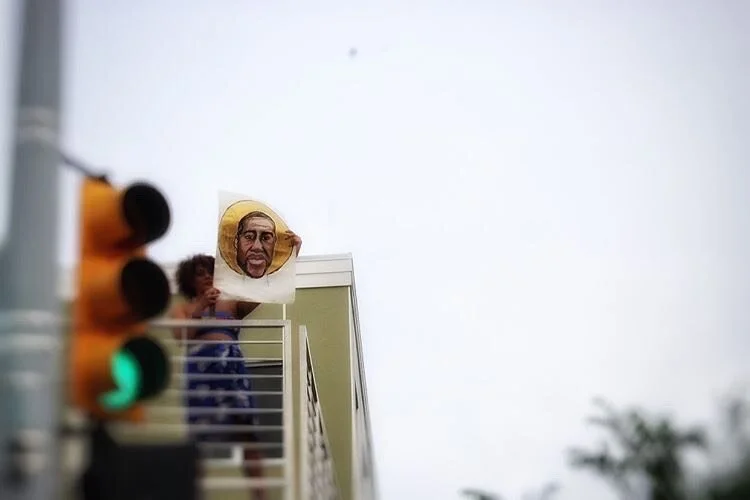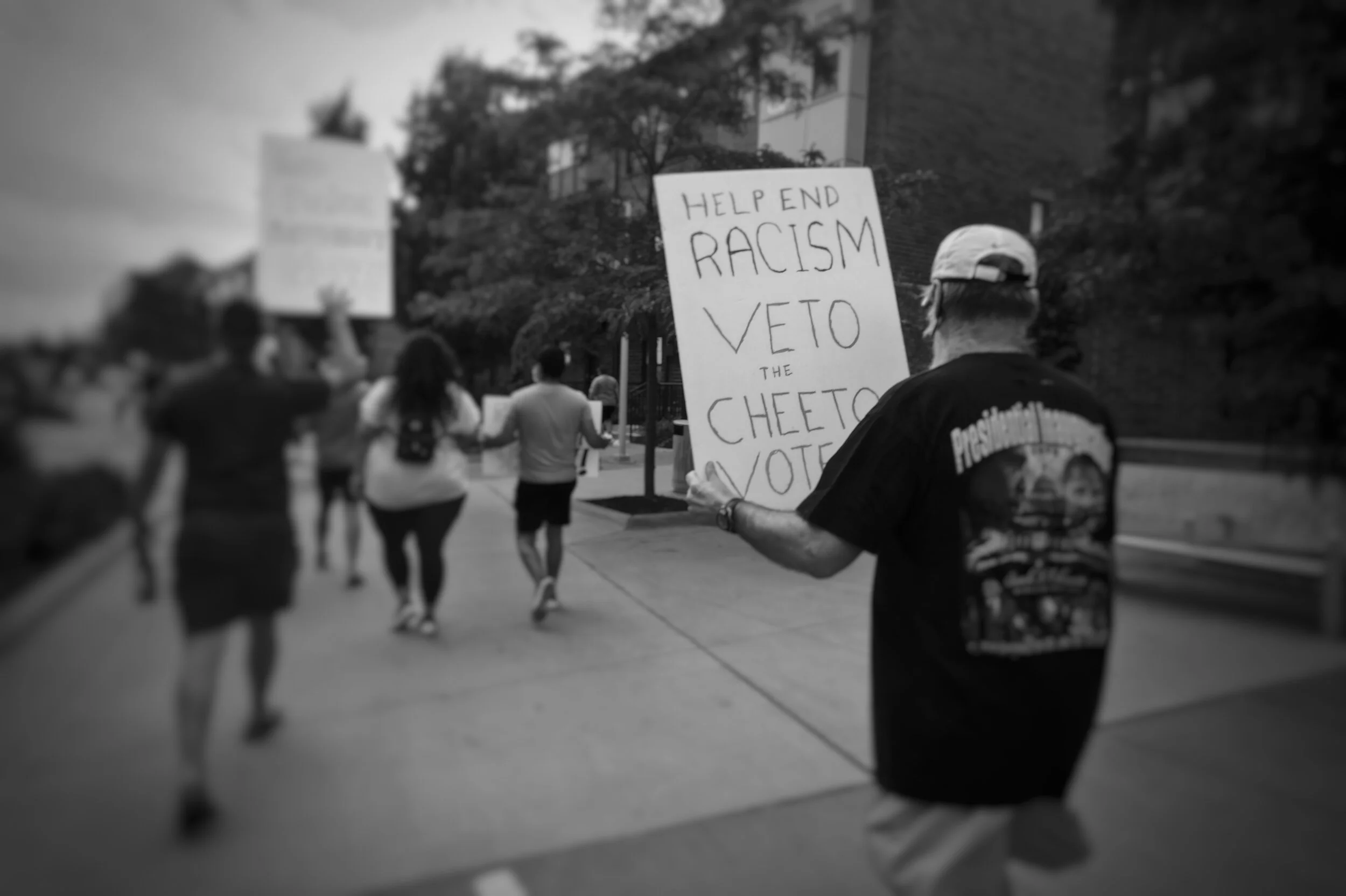If It Wasn’t for You, What Would I See?
What it’s like documenting Black Lives Matter protests from the lens of young photographers.
By Brianna Logan
Photo by Caia Taylor
Currently, black men and women are being attacked by the hands of police who are supposed to protect us. I consider myself to be a voice, and many photographers like me are taking this time to document a narrative that describes not only a reality but a historic moment.
However, mostly nonblack people are covering stories from local and national media outlets. The images of protests are seen as unpeaceful, violent and illegal. People have been treating this political moment as if it’s a living trend. To create a change, society must act altogether. Society needs to take this current moment to improve how it operates in terms of diversity to include the perspective of the real world and feature minority groups.
At this moment an ally gets to show who is fighting with black creators and teenagers and what they are fighting for. Teenagers throughout the nation have been protesting against systemic racism and police brutality this summer. Protests have reached a global scale, and many youths are taking the lead or attending protests to create strong and realistic captivating photographs. I attended multiple Black Lives Matter protests and spoke to a variety of people from Detroit who have been organizing and photographing the protests:
Caia’s Taylor backstory is captivating just like her photographs. Caia is 16, and she goes to Cass Technical High School. “While I’ve been protesting during the Black Lives Matter movement, I felt like I was making history,” she says. “Even though there've been many protests around this topic before, I felt like I was doing my part in documenting this historic event.”
Photo by Caia Taylor
She experienced the intensity of pain African Americans have experienced from 450-plus years ago, to the present. “When taking photos at the movement, the main thought running through my mind was to capture the people. I didn't want to put too much focus on the signs — I wanted to capture the people and the environment.”
She adds that she wants to bring change within her community. “I would like Detroit and every other city in the world to continue to protest and fight for the lives lost under police brutality and racist hate crimes,” she says.
Caia felt the need to be present in and bring awareness to the Black Lives Matter movement. “I feel like this movement has always been necessary. I’m glad to see that people are paying attention now and looking for a change. I also think it is important that we continue this momentum and keep fighting for justice!”
Sylvia Jarrus, 22, attends Michigan State University and is majoring in photojournalism. Sylvia says that she’s been documenting photos her whole life. “Photography has always been in my life,” she says. “My grandpa always took pictures of me as a kid with his film camera.” Jarrus got into professional photography three years ago and started at the student paper The State News. This past year, she entered the freelance world.
However, COVID-19 brings a new challenge for photographers like Jarrus. “It's a lot of adrenaline while in a huge crowd,” she says. “You have to be aware of your surroundings.” When the movement started in Michigan, Jarrus felt various emotions. “It was very overwhelming to see so many people out in downtown Detroit. It was kind of surprising yet, overwhelming to see people out especially during a pandemic.”
Photo by Sylvia Jarrus
She planned to attend as a protester herself. “Sometimes I wasn't taking photos, I was just there. It’s moments where there could’ve been a great photograph, but it's more important for you to just see it with your own eyes and experience (it) in your head. Moments like that you’re just going to keep with you.”
Jarrus highlighted an issue that needs to change: the lack of diversity in newsrooms. “(It’s) a huge problem when your newsroom isn't diverse. It does a disservice to the communities that we are supposed to be serving — we work for the community,” Jarrus says. “If newsrooms don't reflect how the communities look, then that's a problem.” Jarrus is happy that these issues are being brought up more among journalists and photojournalists. “There are a lot more conversations in the photo world,” she says.
Jarrus says it’s sad to see all the lives that have been lost because of police brutality. “It’s sad to see this happening over and over again, but it’s empowering to see young people taking charge and leading these protests. (It’s) empowering but sad to see how this is how they’re using their childhood, and it shouldn’t be part of their initiation while growing up. It’s very traumatic. There needs to be real change. It should just be a simple thing. Black people should deserve to live, simply as that.”
Photo by Sylvia Jarrus
During these two interviews, I began to notice that the conversation about these issues is coming forward, and it's time to break the cycle. We strive for inclusivity and these images are the message for the people. These images tell the pain of my people, the misery and hopelessness of the racial struggle.
In the future, I hope people keep expressing Black culture, continue activism, and the Black experience because we need diverse voices. Also, we need to educate on ways to reduce racism and support new policies. Society needs to start thinking about changing representation and start discussing what Black liberation looks like with no social equality in the system.
Photo by Brianna Logan
About the Writer:






